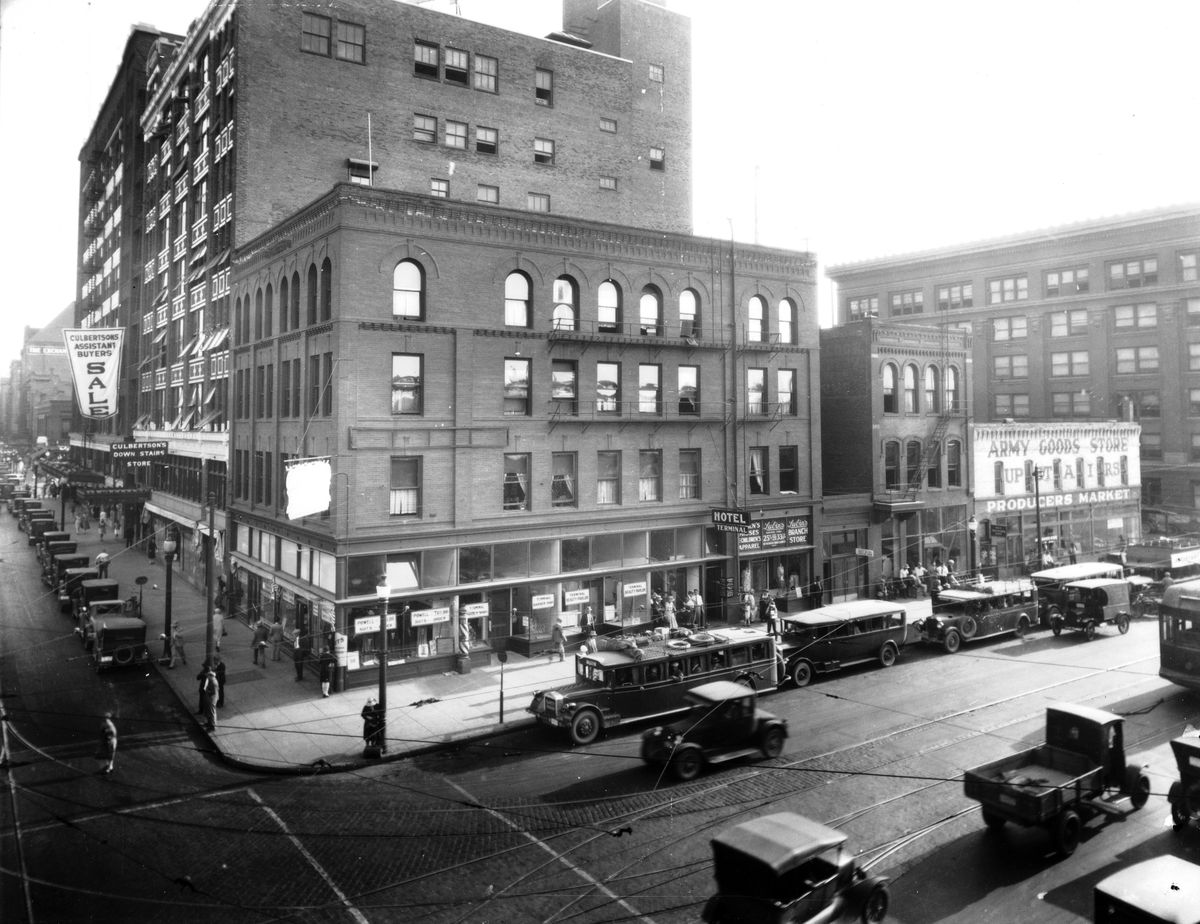Then and Now: First unified bus depot in city

In the 1920s, the gasoline-powered bus was becoming a more flexible mode of public transit than the streetcar or train.
Three old buildings along Spokane’s Trent Avenue, between Howard and Wall streets, were turned into a bus depot in 1924 by the Auto Interurban Co. and the Spokane-Lewiston Stage Line. The buildings dated from 1890-1892. The ground floors were connected and space leased out to vendors of food, sanitary conveniences, souvenirs and general merchandise. It was the first unified bus plaza in Spokane.
Before that, bus companies jockeyed for curb space near their offices downtown. With the new Motor Bus Depot, commuters taking local buses could wait out of the rain. Young people bound for college in Pullman or Moscow dragged their heavy trunks to the curb each fall. School kids carried stamped bus tokens for their ride home. During the Christmas holiday, long-distance travelers flooded through.
Curbside traffic blocked Trent Avenue, so an open concourse was added on Wall in 1930. By then, the terminal was also home to the Interstate Coach Co., Union Pacific Stages, Priest River Line, Washington Motor Coach, Medical Lake Stage Line and the Ford-Tum Tum Stage Line.
During World War II, locals were asked to postpone vacations and other trips during the holidays so soldiers in transit could get home on leave. The depot was the brainchild of Herbert S. Hawley, operator of the Auto Interurban Co. He started in 1911 with two cars carrying passengers from the train depot in Priest River up to Priest Lake. He came to Spokane in 1913. When Hawley died at 78 in 1953, Auto Interurban was running 50 local and regional buses.
More companies were added until a new depot was needed. The Union Bus Depot opened in 1949 at 1125 W. Sprague Ave. The old depot continued for a few years then closed for good. Great Northwest Federal Savings and Loan tore the buildings down in 1977 to make way for a new bank.
– Jesse Tinsley